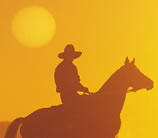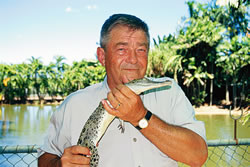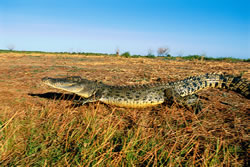



 Hunting for survival
Hunting for survivalOnce deemed a predatory pest, the crocodile is now a valued species in the Northern Territory where “use it before you lose it” conservation measures have ensured its survival. The next step in the species’ protection could be safari-style hunts, if a NT Government crocodile management plan is given Federal Government approval.
Story Fiona Gowers Photos Don Fuchs and Fiona Gowers
The idea of allowing – even promoting – the harvest of wildlife as a conservation measure is a sensitive issue. In the 1970s, with the spotlight shining on native animal protection, the concept of using wildlife commercially was overshadowed. Now, conservation through sustainable use (CSU) is a mainstream strategy. In the Northern Territory, the Parks and Wildlife Service (PWSNT) saltwater crocodile management plan is internationally renowned as a model of adaptive sustainable use. Introduced in 1987, it seeks and values pragmatic conservation outcomes – especially by local people living with wildlife - and has a track record of success. It has shed much of the philosophical baggage underlying urban conservation.
 Leading the charge has been Dr Grahame Webb, a feisty zoologist researching,
recording and reporting from Arnhem Land.
Leading the charge has been Dr Grahame Webb, a feisty zoologist researching,
recording and reporting from Arnhem Land.
As director of Wildlife Management International Pty Ltd (WMI) since
1973, he has striven to prove that conservation and farming can succeed in
parallel.
His life’s work with crocodiles and other reptiles has led to a new vision
for wildlife conservation. “So, what have we done in the Northern Territory?”
Dr Webb asks, both fists slamming the glass-topped table. “We’ve taken
the biggest, meanest, most predatory animal in the country – and one of the
biggest
in the world – and we’ve brought them back in every creek, in every river,
in every swamp across the whole of the coast.” ![]()
Full story OUTBACK Issue 35 June/July 2004
Subscribe now and receive each bi-monthly issue for only $45 mailed to any address in Australia. Overseas rates at Subscription Centre. OUTBACK has been Australia's fastest-growing magazine for the past two years in a row.
Visit rmwilliams.com.au for R.M.Willams history, news and the on-line product catalogue